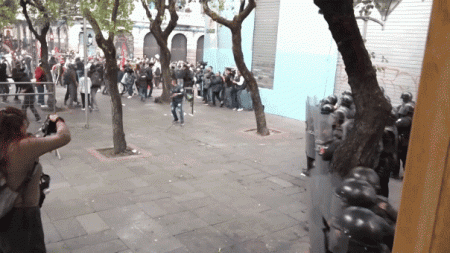Archaeologists in the Turkish region of Kazakhstan made a significant discovery of ancient treasures dating back approximately 2,000 years in a burial mound believed to be from the Kangyu Era, located along the Silk Road. Unearthed items include a jug, a bronze mirror, a Roman fibula, gold earrings shaped like the moon adorned with turquoise and ruby, a shoe, a belt buckle, and an arrowhead designed for bird hunting. The finding of the bronze mirror, believed to have originated from China during the Han dynasty, suggests that the buried woman held high status, as such mirrors were luxury items used by the wealthy and influential.
The archaeological excavation revealed objects indicating the Kangyu state’s diplomatic ties with ancient empires such as Rome and China. Mirrors similar to the one unearthed have also been found in regions like Afghanistan and the southern Ural region. The discovery of a Roman fibula further underscores the trading connections along the Silk Road. The artifacts offer a glimpse into the past, shedding light on the cultural exchange and interactions between different civilizations during that time period.
The finding of the ancient treasures in Kazakhstan adds to the growing body of evidence showcasing the historical significance of the region as a key hub on the Silk Road. The items unearthed in the burial mound provide valuable insights into the social structure, status symbols, and trade networks of the Kangyu Era. The artifacts offer a window into the lives of the ancient people who lived along these ancient trade routes, illuminating the connections between different civilizations and the exchange of goods and ideas.
The excavation was led by a team of archaeologists from Kazakhstan’s Ozbekali Zhanibekov University and local government archaeologists. The artifacts discovered, including the bronze mirror, gold earrings, and other items, will be curated and displayed at the National Museum of the Republic of Kazakhstan in Astana. The discovery highlights the ongoing efforts to preserve and showcase Kazakhstan’s rich archaeological heritage, offering a glimpse into the country’s ancient past and its connections to other ancient empires.
The presence of objects like the bronze mirror, Roman fibula, and gold earrings in the burial mound points to the high status and wealth of the individuals buried there. These luxury items reflect the ornamentation and style of the time, indicating the cultural and artistic influences at play during the Kangyu Era. The discovery sheds light on the burial practices, social hierarchies, and material culture of the ancient inhabitants of the region, providing valuable information for researchers and historians studying this period of history.
Overall, the archaeological findings in the Turkish region of Kazakhstan offer a fascinating glimpse into the ancient past of the Kangyu state and its connections to other powerful empires along the Silk Road. The discovery of valuable artifacts like the bronze mirror, Roman fibula, and gold earrings enriches our understanding of the cultural exchanges, trade networks, and diplomatic relationships that characterized the region during that era. The excavation provides a window into the lives of the ancient people who lived along these ancient trade routes, offering valuable insights into their society, customs, and connections to the broader world.













